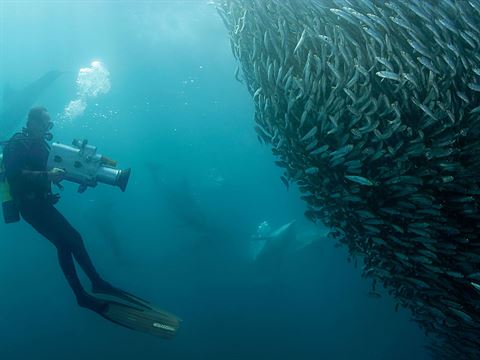An expert’s guide to... • June 2014
Underwater love: five unspoilt diving sites
Diving in the Caribbean? Check. The Great Barrier Reef? Been there. With more and more people getting adventurous under water, we ask expert dive instructor and founder of Dive Butler International, Alexis Vincent, where to take the plunge away from the crowds
French Polynesia
The best scenario in the dive world would be to arrive somewhere and think nobody else has ever dived there. In the Maldives, there are still remote sites such as Fomulla and Addu where you rarely see another boat. However, slightly lesser known is the Pacific, one of the least explored frontiers in the diving world. French Polynesia is great for shark lovers. You can jump into the water and have 500 sharks surrounding you. But there are also strong currents, so it’s more suitable for experienced divers.

The Mediterranean
The Med is often overlooked as a dive destination. Yes, it’s not as warm as the Caribbean and you won’t have thousands of fish surrounding you, but there are some fantastic sites. We did a trip last year starting in Cannes and travelled down the Italian coast, across to Sardinia (its Maddalena archipelago is pictured above) and Corsica, and back to Cannes. You won’t see mantas, but there are ruins, underwater formations, caves, statues, wrecks and an amazing play of light.
Indonesia
For the past 10 or 15 years, the two in-the-know Indonesian hot spots have been Komodo and Raja Ampat on the west of Papua New Guinea. This area is part of the cradle of marine biodiversity, and there are more marine species here than anywhere else in the world. On almost every dive I would see something I had never seen before. There aren’t as many big fish as the Maldives, but for small creatures it is amazing: there are 3,000 species of nudibranchs (small, brightly coloured snails) recorded, and another estimated 3,000 still undiscovered.

South Africa
One place that has become a bit of a Mecca for experienced divers is the Sardine Run (pictured) in South Africa (from May to July). It is not for the faint-hearted. The sardines spawn in the waters of Agulhas Bank and move north along the east coast of South Africa, causing a feeding frenzy, with pods of dolphins. It’s the deep blue, so you might also get tiger sharks. You need to be pretty fearless, but it’s a real National Geographic experience.
Vancouver Island
There is hardly anyone else around, even when you’re diving off Vancouver Island, Canada. This is where I took my first open-water dive, and I thought it was the best thing that had ever happened in my life up to that point. You won’t see the crystal-blue seas and aquarium fish, but you will find wolf eels, seals and wrecks.
Dive Butler International is a pioneer in the field of luxury ‘rendezvous’ diving, with an international team of multilingual PADI instructors. This year it is launching Life Butler, offering incredible personal services and experiences anywhere on earth.
